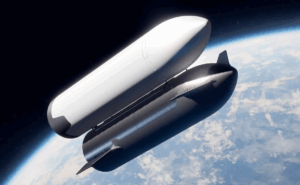Fugaku Next and the Need for Sustainable Supercomputing
In six years, Japan will unveil the world’s first “Zeta-Class” supercomputer, Fugaku Next, marking the start of a new supercomputing era. Japan hopes the massive, ¥110bn ($775 million USD) project will catapult them ahead of the curve when it comes to computing power. Once completed, Fugaku Next will operate at one-thousand times the speed of today’s fastest supercomputers (1). But such an accomplishment is not important for just its own sake. Supercomputers sit at the critical junction between technological progress, energy consumption, and the political AI race, and therefore embody the competing goals of the modern world. But how will Fugaku Next revolutionize the field—and do its technological benefits outweigh its environmental harms?
The modern world, with its complex mathematical problems, scientific simulations, and data-processing needs, demands vast computational power (1, 2). However, the average computer, meant to provide enough computation for personal use, has nowhere near the capability to undertake these huge tasks. Instead, supercomputers, manipulating reams of information at extraordinary speeds, fill that demand. A typical supercomputer consists of thousands of general-purpose Central Processing Units (CPUs) wired together in a data center that provides power and cooling (for reference, a Macbook has just one CPU). As the race to train AI ramps up, supercomputers are also incorporating specialized chips known as Graphical Processing Units (GPUs). Originally designed to enhance video game graphics, GPUs excel at processing several operations in parallel, making them crucial for AI models that require simultaneous computation (3).
Researchers measure supercomputer performance with floating-point operations per second (FLOPS), which represent how many decimal numbers the machine can manipulate every second (1). The world’s current fastest supercomputer, America’s Frontier, achieved numbers in the exaFLOPS range: one billion billion computations per second (1, 4). Even so, Japan’s Fugaku Next plans to outpace Frontier a thousand-fold and break into the zetaFLOPS range (hence its designation as Zeta-Class) (1). But how sustainable will it be?
One of the many corridors of Frontier’s data center (a)
By 2030, data centers are projected to make up 4% of the world’s total energy consumption—roughly twice Britain’s entire current usage (2). According to The Economist, the computing power required to train AI models has been “doubling every five months,” ballooning both the cost and energy demand of supercomputers (2). Yet supercomputers have simultaneously become a national resource and a political weapon; they provide countries with scientific opportunities, technological power, and prestige on the world stage. Nations are thus vying with one another to increase their own stockpiles and remain cutting-edge in an era of rapid advancement (1, 4). For example, in response to America and China’s huge lead in supercomputing, the European Union launched a competing effort in 2018, towards which they invested €8bn ($8.7bn USD) to build twelve new supercomputers (3). The supercomputing industry is thrust into a difficult position; supercomputers must be built, but they cannot be expensive, reckless power-guzzlers. What, then, is the way forward?
Take LUMI, the world’s third-most-powerful supercomputer. Sitting in Kajaani, Finland, this behemoth of silicon serves as an example of how to do supercomputing right. LUMI boasts 429 petaFLOPS of processing, roughly a third of Frontier’s capability. More importantly, though, it is powered entirely by hydroelectricity, it uses the chilly Arctic air to cool itself, and waste heat from its data center heats nearby homes. It is no surprise that LUMI’s facility is carbon-negative—but such an accomplishment was only made possible by mitigating the massive power and heat load of supercomputing (2).
Supercomputing is not a field where indiscriminate expansion can be sought. When Fugaku Next comes online and Japan becomes the country with the fastest supercomputer in the world, they will also take on the responsibility of showing other nations how to conduct sustainable supercomputing. LUMI proves that such a pursuit is possible, but it is not yet widespread. For our sake, supercomputers must be faster than ever. But for our planet’s sake, they need to do more with less energy.
Images
Sources
- Appel, J. (2024, September 16). The First “Zeta-Class” Supercomputer Will Revolutionize Science in Just 6 Years. Popular Mechanics. Retrieved from https://www.popularmechanics.com/science/a62188254/japan-first-zeta-class-supercomputer/
- The Economist. (2023, August 16). Can computing clean up its act? The Economist. Retrieved from https://www.economist.com/science-and-technology/2023/08/16/can-computing-clean-up-its-act
- The Economist. (2024, March 21). Europe wants startups to do AI with supercomputers. The Economist. Retrieved from https://www.economist.com/business/2024/03/21/europe-wants-startups-to-do-ai-with-supercomputers
- Clark, D. (2022, May 30). U.S. Retakes Top Spot in Supercomputer Race. The New York Times. Retrieved from https://www.nytimes.com/2022/05/30/business/us-supercomputer-frontier.html











Comments are closed.